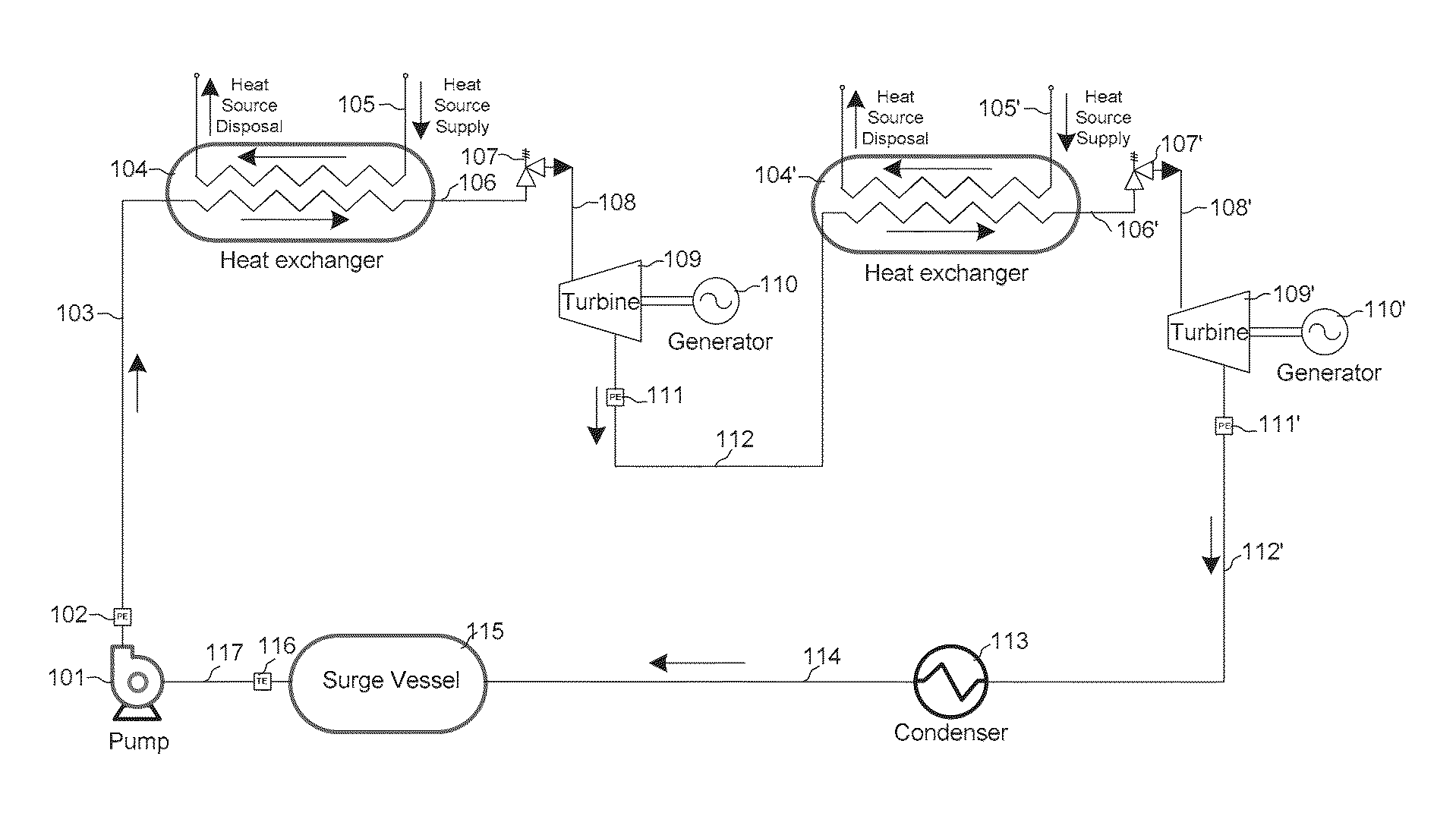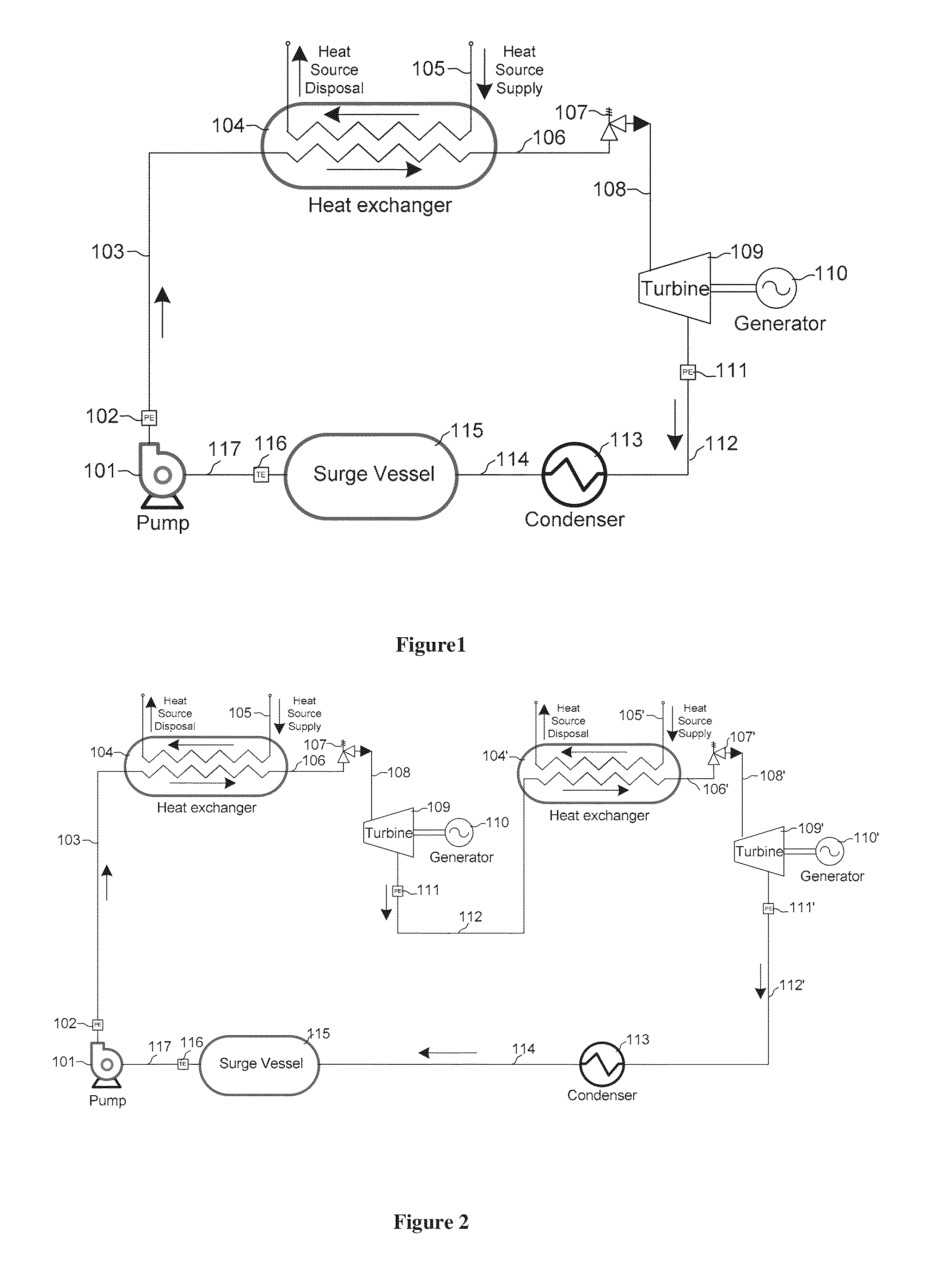Method and system for generating power from low- and mid- temperature heat sources
a heat source and low- and mid-temperature technology, applied in steam engine plants, positive displacement engines, lighting and heating apparatus, etc., can solve the problems of large amount of industrial waste heat, and inefficient utilization of renewable energy sources such as solar, thermal and geothermal energy, so as to simplify the heating process of working fluids
- Summary
- Abstract
- Description
- Claims
- Application Information
AI Technical Summary
Benefits of technology
Problems solved by technology
Method used
Image
Examples
example embodiment
[0070]In order that those skilled in the art may better understand the advantages of the present invention, the following example is given by way of illustration only and not necessarily by way of limitation. Numerous variations thereof will occur and will undoubtedly be made by those skilled in the art without substantially departing from the true and intended scope and spirit of the instant invention herein taught and disclosed.
[0071]This example illustrates the advantages of using a zeotropic mixture as a working fluid by comparing the exergetic efficiency of the heat exchanger between a pure fluid and a zeotropic mixture during the condensation process. The fluids of choice for comparison are pure 1,1,1,2-Tetrafluoroethane and a zeotropic mixture of difluoromethane and 1,1,1,2-Tetrafluoroethane (0.3 / 0.7 mass fraction). For the comparison, the following design and operating parameters are used for both working fluids:
[0072]Average condensing temperature: 309.46K (97.36 F);
[0073]W...
PUM
 Login to View More
Login to View More Abstract
Description
Claims
Application Information
 Login to View More
Login to View More - R&D
- Intellectual Property
- Life Sciences
- Materials
- Tech Scout
- Unparalleled Data Quality
- Higher Quality Content
- 60% Fewer Hallucinations
Browse by: Latest US Patents, China's latest patents, Technical Efficacy Thesaurus, Application Domain, Technology Topic, Popular Technical Reports.
© 2025 PatSnap. All rights reserved.Legal|Privacy policy|Modern Slavery Act Transparency Statement|Sitemap|About US| Contact US: help@patsnap.com



